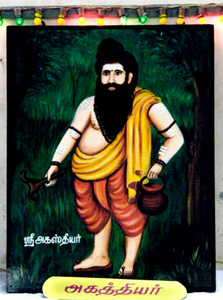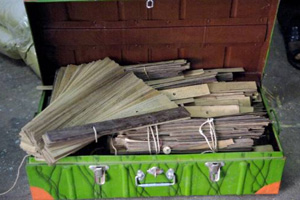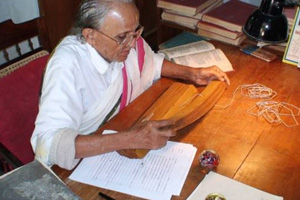Akattiya and the origins of Siddha medicine in TamilnaduBy Kenneth Zysk
Research into Citta (Skt. Siddha) medicine in Tamilnadu has revealed certain problems which must be overcome in order to properly understand this medical system and its history. The central problem lies with the reliability of the secondary sources, which are written primarily by Tamil Citta doctors. Very little scholarship on the subject has been carried out by western students and scholars of India and Indian medicine.
Due to the increased awareness of Tamil’s uniqueness over the past decades, a strong nationalist movement has grown up in Tamilnadu. Tamilians consider their cultural and linguistic heritage to be older and more important than the Indo-Aryans to the north; some even claim their ancestors were the first civilised humans on the planet. The fire of this controversy has recently been kindled by a debate centring on the still-to-be-deciphered script of the so-called Indus Valley Civilisation. This ancient urban culture, which extended along the Indus River and it tributaries in what is now Pakistan, resembled the great civilisations of ancient Egypt and Mesopotamia in size, development and age. One side of the debate maintains that the script represents a language probably of Dravidian origin, while the other side claims that it does not represent a language at all. Tamilians, whose language is Dravidian, are anxiously following the debate, for if the former side prevails, it would confirm their antiquity on the Indian subcontinent. The lens through which Tamilians look at their own history will always distort the image in favour of Tamil superiority and antiquity.

The mythical figure of Akattiya is known in Tamilnadu as the founder of both the Tamil language and Citta medicine. Through Akattiya Tamil language and medicine have become the two pillars supporting the edifice of Tamil identity. For most Tamilians, Citta medicine has been a part of Tamil culture and civilisation from beginning of time. The historical records, however, reveal a different story.
Based on linguistic evidence from surviving Tamil texts, best estimates place the origin of the system medicine now known as Citta at no earlier than the 16th century C.E. Most of these texts, written on palm leaves, are no older than 250 years, since the climatic conditions and prevalence of insects hasten the deterioration of the delicate palm leaves. Moreover, the content of these texts indicate that Citta medicine borrowed ideas and techniques from both Ayurveda in the form of a humour-based aetiology and the Arabic-based Unani medicine in the form of diagnosis by examination of the patient’s pulse and urine. Although the origin of Citta’s alchemical medicine remains a mystery, its technique of Varma-massage, entailing a type of acupressure at select points on the body, and its method of bone-setting represent probably two of the most indigenous parts of the medical system. More on the characteristics of Citta follow in further letters from India.
|
|

Palm-leaf Citta manuscripts. Photo by Christian Sebastia.

Traditional scholar reading manuscripts. Photo by Kenneth Zysk.
|